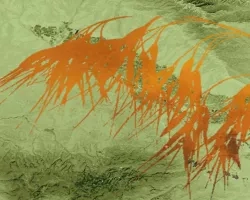Black Hills Wildfires (Summer 2022)
Team: Casey Menick (Project Lead), Haley Stuckmeyer, Heidi Rogers, Yeshey Seldon
Summary: The 2000 Jasper Fire in the Black Hills of South Dakota was the largest wildfire to date in the region, burning over 83,000 acres of ponderosa pine forest. In collaboration with partners from the United States Forest Service (USFS) Black Hills Experimental Forest, USFS Rocky Mountain Research Station, and United States Geological Survey Geosciences and Environmental Change Science Center, we characterized post-fire forest regeneration within high-severity burn patches. We accomplished this by implementing novel conifer detection techniques using a snow index mask to create a winter, snow-on image composite from Landsat 8 Operational Land Imager (OLI) and Sentinel-2 Multispectral Instrument (MSI) data. We utilized 2015 USFS stem maps of field-observed regeneration plots and ocularly sampled additional reforestation sites planted in 2001–2013. In Google Earth Engine (GEE), the field data and imagery were used to train a Random Forest (RF) model. The RF model classified 2021 conifer regeneration density as low, medium, or high across the high-severity burn area with an overall accuracy of 81.3%. Approximately 45.9% of the high-severity burn had low or no regeneration (0-40 trees per acre) 20 years post-fire. Given our partners' desire to find easily accessible low conifer regeneration zones, we identified 4,079 acres of priority planting sites that were within 1,500 feet of roads, had not been planted previously, and were larger than 50 acres. This method supports the use of snow-on imagery as a successful technique to identify conifer regeneration.



